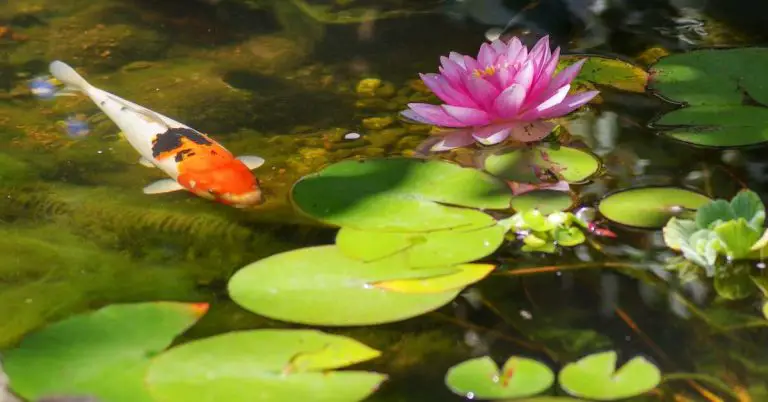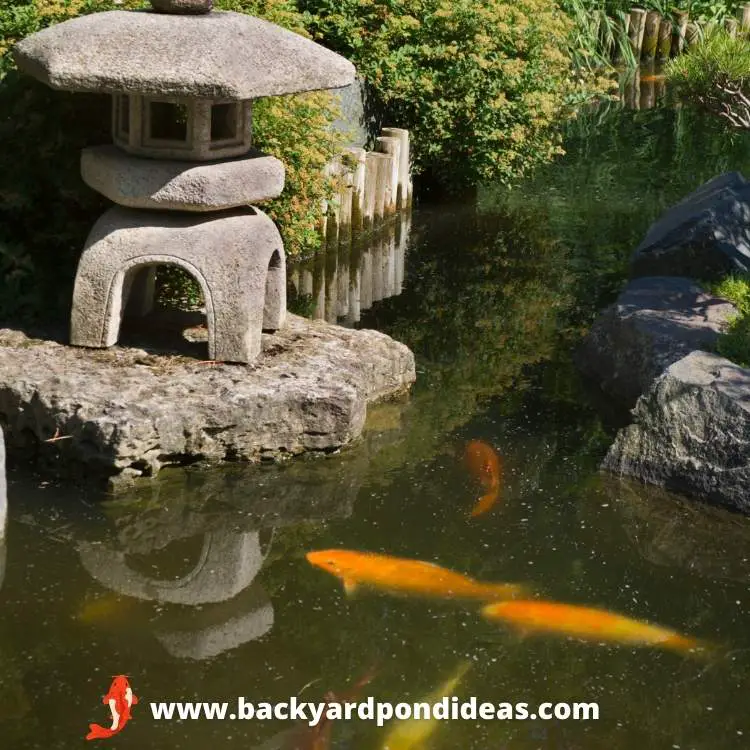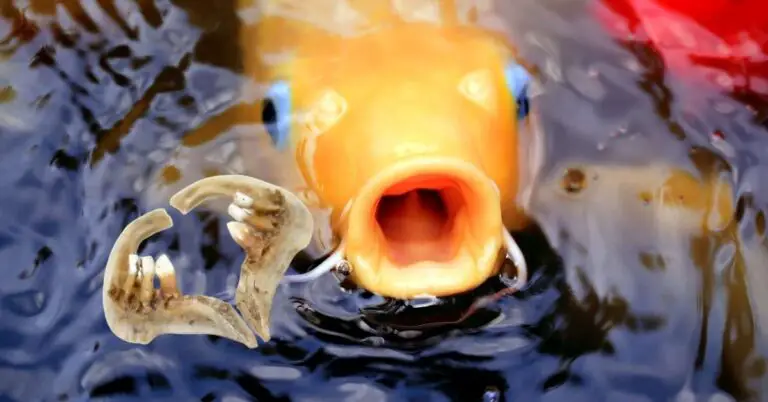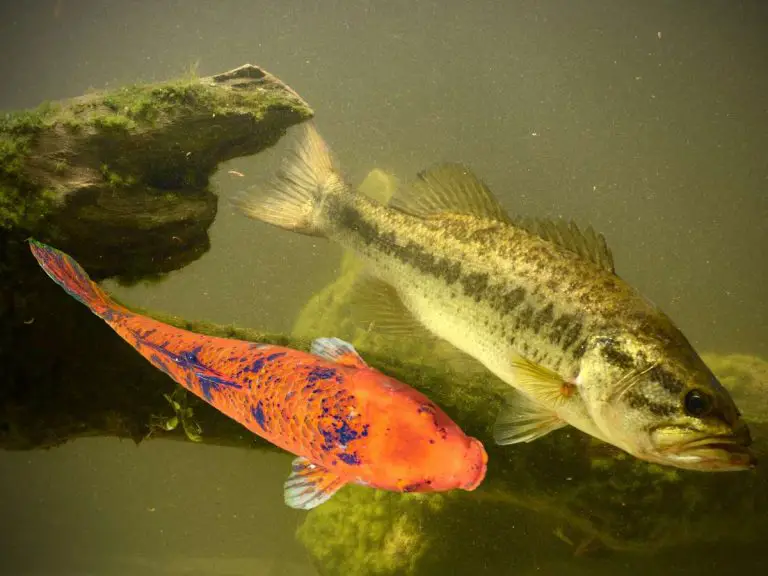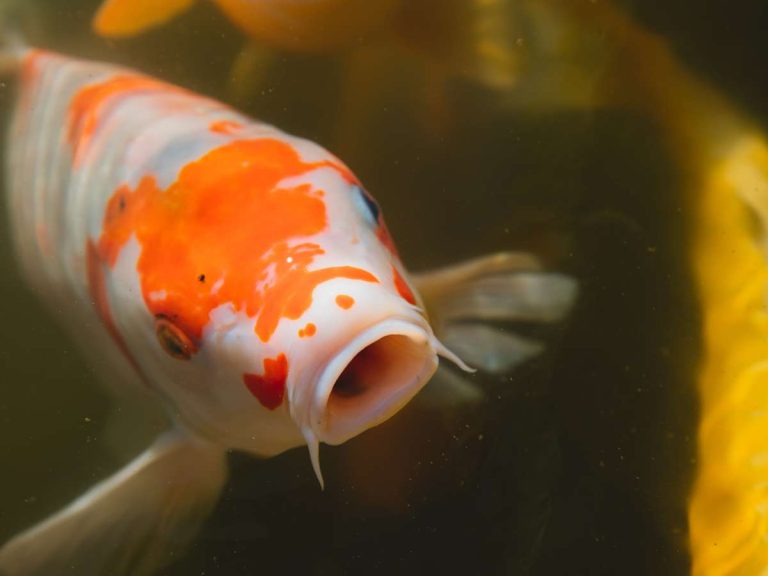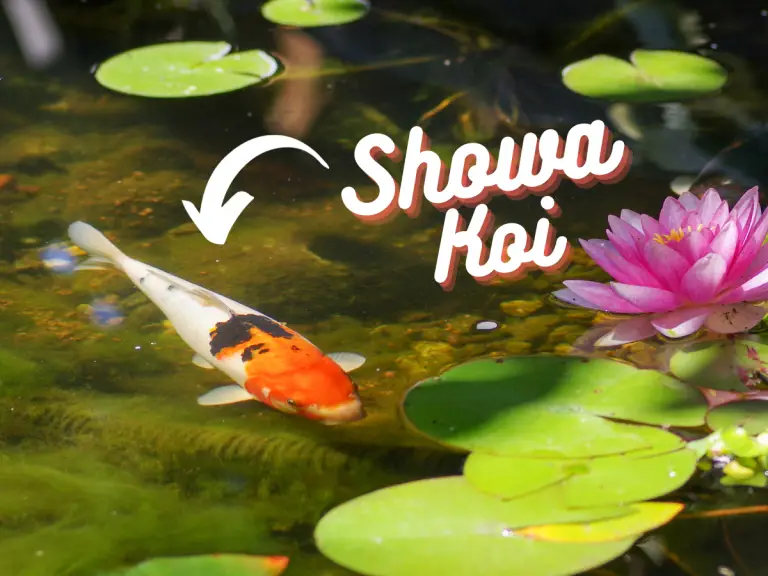Raising Koi Fry: A Complete Guide To Rearing Happy and Healthy Koi From Birth
Raising koi fry (i.e.: baby koi fish) can be a journey of passion, patience, and profound joy. Embarking on the adventure of raising koi from their earliest stages is a rewarding experience that offers enthusiasts a unique opportunity to witness the mesmerizing transformation of these aquatic gems.
Raising koi fry is more than just a hobby; it’s a testament to life’s wonders. As you nurture them from birth, you’ll witness the magic of nature unfold right before your eyes. From understanding their unique characteristics to setting up the perfect environment for their growth, every step is crucial. And with each stage, the bond between you and your koi strengthens, making the journey all the more fulfilling.
In this comprehensive guide to raising koi fry, we’ve covering everything from their delicate beginnings as tiny, tadpole-like wigglers to their majestic evolution into radiant adult koi. Hopefully this guide will not only equip you with all the knowledge you need to raise koi fry successfully, but will also inspire you to appreciate the process, too.
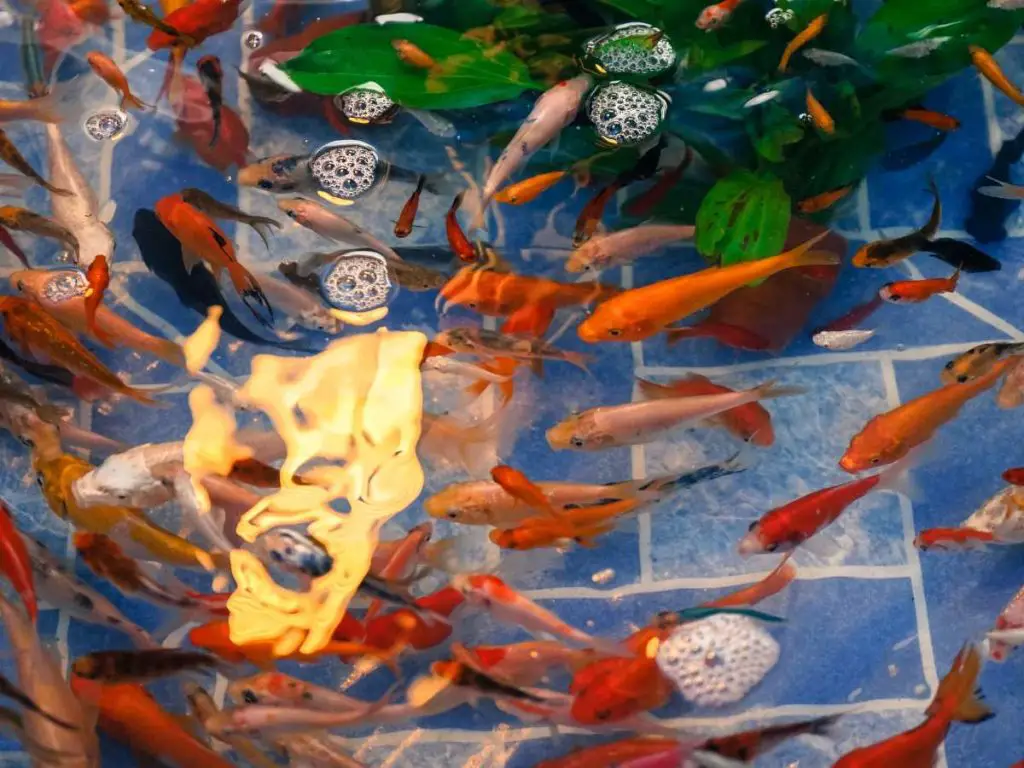
So, whether you’re a seasoned koi enthusiast or a curious beginner, this guide promises to be your trusted companion.
Understanding Koi Fry
Koi fry are the adorable, miniature versions of adult koi fish that are just starting their journey in the world. These captivating creatures are the result of successful koi breeding and are known for their vibrant colors and graceful swimming patterns.
The life cycle of koi fry can be divided into several stages, each requiring specific care and attention. At first, they hatch from eggs as tiny tadpole-like creatures called wigglers. As they grow, they develop into fry with fully formed fins and scales. Eventually, they enter the fingerling stage before becoming mature koi.
Note as well that koi fry are almost indistinguishable in color when they first hatch. Their vibrant colors develop as they grow.
During the early development stages, proper care and handling are crucial to ensure the health and well-being of koi fry. They are delicate and vulnerable to stress, changes in water conditions, and poor nutrition. As an aspiring koi fry raiser, it’s vital to create an environment that mimics their natural habitat to promote healthy growth and development.
But why raise koi fry? Beyond the sheer beauty and tranquility they bring to any pond or aquarium, raising koi from fry allows you to shape their environment, diet, and care from day one, ensuring they grow up healthy, happy, and vibrant.
How long does it take for a koi fry to grow?
Koi fry typically take about 3-4 years to reach their full size, depending on various factors such as diet, water quality, and overall pond conditions. Some can even continue growing for up to 10 years under optimal conditions.
Koi fry undergo a fascinating growth journey. Their growth rate is influenced by several factors:
- Diet: A balanced and nutritious diet plays a crucial role in the growth of koi fry. High-quality koi food, rich in proteins and essential nutrients, can significantly boost their growth rate.
- Water Quality: Maintaining optimal water conditions is essential for the healthy growth of koi fry. Parameters like pH, ammonia levels, and temperature need to be monitored and adjusted as necessary. Clean water with proper filtration ensures that the fry have a conducive environment to thrive.
- Pond Conditions: The size of the pond, the presence of plants, and the density of fish population can influence the growth of koi fry. A spacious pond allows the fry to swim freely and grow without constraints.
- Genetics: Just like in humans, genetics play a role in determining the growth rate and eventual size of koi fish. Some koi varieties might grow faster than others due to their genetic makeup.
- Seasonal Changes: Koi fry grow faster during warmer months when they are more active and have a higher metabolism. During colder months, their growth rate might slow down as they become less active.
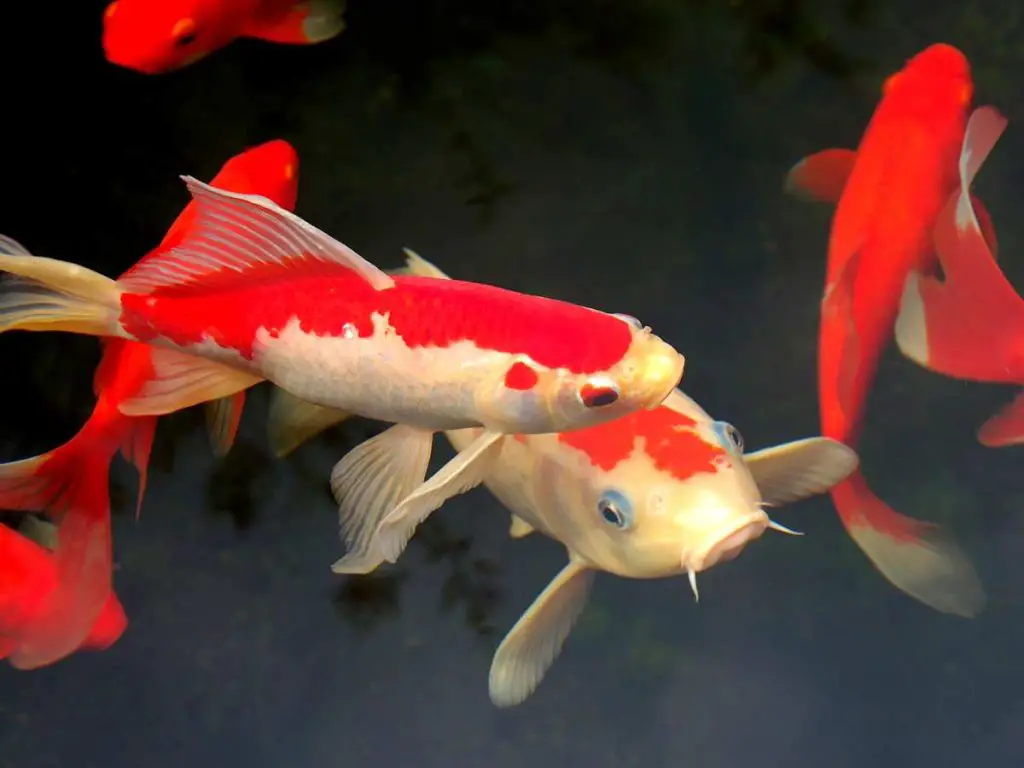
Ultimately, while the typical growth period for koi fry to reach full size is around 3-4 years, it’s essential to provide them with the right conditions to ensure healthy and optimal growth. Proper care, a balanced diet, and a well-maintained pond environment can make a significant difference in their growth journey (and don’t worry – we cover all that below!).
Social Behavior of Baby Koi
As koi fry grow and develop, they begin to exhibit distinct social behaviors. One of the most intriguing behaviors observed is the establishment of a pecking order. This hierarchical structure determines which fish get priority access to food and the best resting spots. Dominant fry will often be more active and assertive, while the more submissive ones might hang back. Observing these interactions can be both fascinating and educational for koi enthusiasts.
It’s also essential to ensure that all fry get equal access to food and that no single fry is being overly bullied or isolated, as this can impact their health and growth.
Table: Overview of the fry raising process
| Stage/Aspect | Description |
|---|---|
| Eggs | – Laid by female koi after mating. – Hatch in 4-7 days depending on temperature. |
| Hatching | – Fry are tiny and translucent. – They remain attached to surfaces for a few days. |
| First Few Days | – Fry start swimming in search of food. – They consume their yolk sac for nourishment. |
| Feeding | – Start with liquid fry food. – Gradually introduce powdered fry food, then brine shrimp. |
| Growth | – Fry grow rapidly with proper nutrition. – Size varies, some may grow faster than others. |
| Pond Conditions | – Maintain clean water. – Use air stones for oxygenation. – Avoid strong currents. |
| Separation | – Separate larger fry from smaller ones to prevent cannibalism. – Use separate tanks or containers. |
| Health Monitoring | – Check for signs of diseases or parasites. – Treat promptly with appropriate medications. |
| Transition to Pond | – Introduce fry to the main pond gradually. – Ensure they are acclimated to the new environment. |
Setting Up a Proper Koi Fry Tank
When it comes to setting up a proper koi fry tank, there are a few key considerations to keep in mind. First and foremost, you’ll need to ensure that the tank is the right size for your growing fry. Koi fry require a tank that provides ample space for swimming and growth, so opt for a tank that is at least 50 gallons in size.
Next, water quality is of utmost importance when it comes to raising healthy koi fry. Maintain optimal water conditions by regularly monitoring and adjusting the pH, ammonia, nitrate, and nitrite levels in the tank. Invest in a reliable water testing kit, and perform regular water changes to keep the water clean and free from harmful toxins.
When selecting a filtration system for your koi fry tank, choose one that provides both mechanical and biological filtration. An efficient filter will remove debris and uneaten food from the water, while also providing beneficial bacteria for biological filtration. This will help maintain good water quality and keep your koi fry healthy.
In addition to proper filtration, it’s important to create hiding spots and nursery vegetation in the tank. These will serve as safe zones for your koi fry to retreat to when they feel threatened or stressed. Place rocks, plants, or PVC pipes in the tank to provide hiding spots, and add floating plants like duckweed or water lettuce to create a natural nursery environment.
Pro-Tip: You may need to shield your fry tank from direct sunlight, which can cause rapid temperature fluctuations and promote algae growth.
Feeding Koi Fry
Feeding koi fry is a crucial aspect of their growth and development. These little guys have big appetites, and it’s up to you to provide them with a diet that meets their nutritional needs. Here’s what you need to know about feeding koi fry:
Recommended diet for koi fry at different stages
Koi fry go through several growth stages, and their nutritional requirements change as they develop. At the early stages, they rely on their yolk sac for nutrition. Once they start swimming and their yolk sac is absorbed, you can start feeding them with specialized fry food.
Fry food should have a high protein content and be small enough for the tiny mouths of koi fry. Look for formulas specifically designed for young koi or opt for finely ground flake food or crushed pellets.
You may also want to explore making homemade food for your fry and koi.
Proper feeding techniques and frequency
When it comes to feeding koi fry, the rule of thumb is “little and often.” Instead of giving them one big meal, it’s better to feed them small portions several times a day. This helps prevent overfeeding and ensures that each koi fry gets its fair share. Overfeeding can also lead to water quality issues, as uneaten food can decay and produce harmful ammonia.
Ideally, feed your koi fry 4-6 times a day in small amounts that they can consume within a few minutes. This regular feeding schedule mimics their natural feeding habits in the wild.
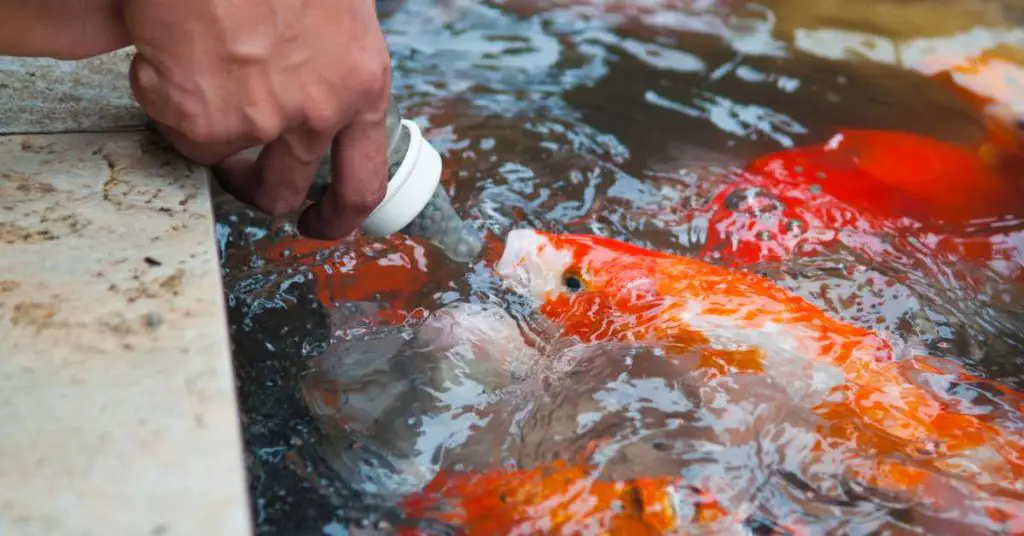
Monitoring and adjusting feeding amounts based on growth rate
As your koi fry grow, so does their appetite. It’s important to keep an eye on their growth rate and adjust their feeding amounts accordingly. Underfeeding can stunt their growth, while overfeeding can lead to water quality issues.
Observe your koi fry closely and make sure they are growing steadily and maintaining a healthy body shape. If they look too thin, increase their feeding amounts slightly. Conversely, if they appear overweight or their water starts to become cloudy, reduce their food portions.
Introduction of solid foods
Once your koi fry reach a certain size, usually around 1-2 inches in length, you can start introducing them to solid foods. Gradually transition from fry food to small pellets or flakes specifically designed for young koi.
Monitor their response to the new diet and adjust accordingly. Some koi fry may take longer to transition to solid foods, while others may eagerly devour them right away. Be patient and provide them with a variety of food options to ensure a well-balanced diet.
Managing Water Temperature and Conditions
When it comes to raising koi fry, one of the critical factors you must pay attention to is water temperature and conditions. These little guys are very sensitive to changes in their environment, so it’s essential to create a stable and suitable habitat for them.
Remember: while koi can tolerate a range of temperatures, sudden changes can be stressful. A stable temperature is crucial, especially for fry.
Ideal water temperature for koi fry growth and development
The ideal water temperature for koi fry growth and development falls between 72 and 78 degrees Fahrenheit. This range provides the optimal conditions for their metabolism and overall health.
However, keep in mind that different stages of koi fry development may require slightly different temperatures.
For example, when they’re hatchlings, they prefer higher temperatures closer to 78 degrees Fahrenheit. As they grow older, you can gradually lower the temperature to around 72 degrees Fahrenheit. This cooling process helps slow down their metabolism, ensuring steady growth without any developmental issues.
Importance of gradually acclimating koi fry to different temperatures
Koi fry are highly sensitive to rapid temperature changes. Moving them from one extreme condition to another can cause stress, weaken their immune system, and even lead to lethal consequences. That’s why you need to acclimate them gradually when adjusting the water temperature.
To do this, start by slowly increasing or decreasing the water temperature by a few degrees each day until you reach the desired range. This gradual acclimation allows the koi fry to adjust comfortably without experiencing any sudden shocks or stress-related health problems.
Managing dissolved oxygen levels in the tank
Adequate oxygen levels are vital for the healthy growth and development of koi fry. Insufficient oxygen can lead to stunted growth and other health issues. To maintain optimum oxygen levels in the tank, it is essential to have proper aeration and filtration systems in place.
An efficient and appropriately sized air pump, coupled with an air stone or diffuser, will help oxygenate the water effectively. Additionally, adequate surface agitation, provided by a water pump or waterfall feature, will help exchange gases at the water’s surface, ensuring a sufficient supply of oxygen for your koi fry.
Managing water hardness
Another crucial aspects of water quality is its hardness, which refers to the concentration of dissolved minerals, primarily calcium and magnesium. These minerals are essential for the proper development of koi fry’s bones and scales. Soft water lacks these essential minerals, which can lead to potential health issues for the fry.
On the other hand, excessively hard water can also be detrimental. It’s crucial to maintain a balanced water hardness level in the pond or tank where koi fry are raised. Regular testing and adjustments, using products like water conditioners or mineral blocks, can help achieve and maintain the desired water hardness level, ensuring the optimal growth and health of the koi fry.
Minimizing stress caused by rapid temperature fluctuations
Rapid temperature fluctuations can cause immense stress to koi fry, leading to health problems or even death. To minimize this risk, it’s crucial to maintain a stable and consistent water temperature within their ideal range.
Avoid placing their tank near sources of extreme temperature changes, such as direct sunlight or air conditioning units. Also, be careful when performing water changes or adding new water to the tank to ensure it is around the same temperature as the existing water. Slowly pouring the new water and monitoring the temperature using a reliable thermometer will help you avoid any sudden changes that could stress your koi fry.
Health Care and Disease Prevention In Young Koi
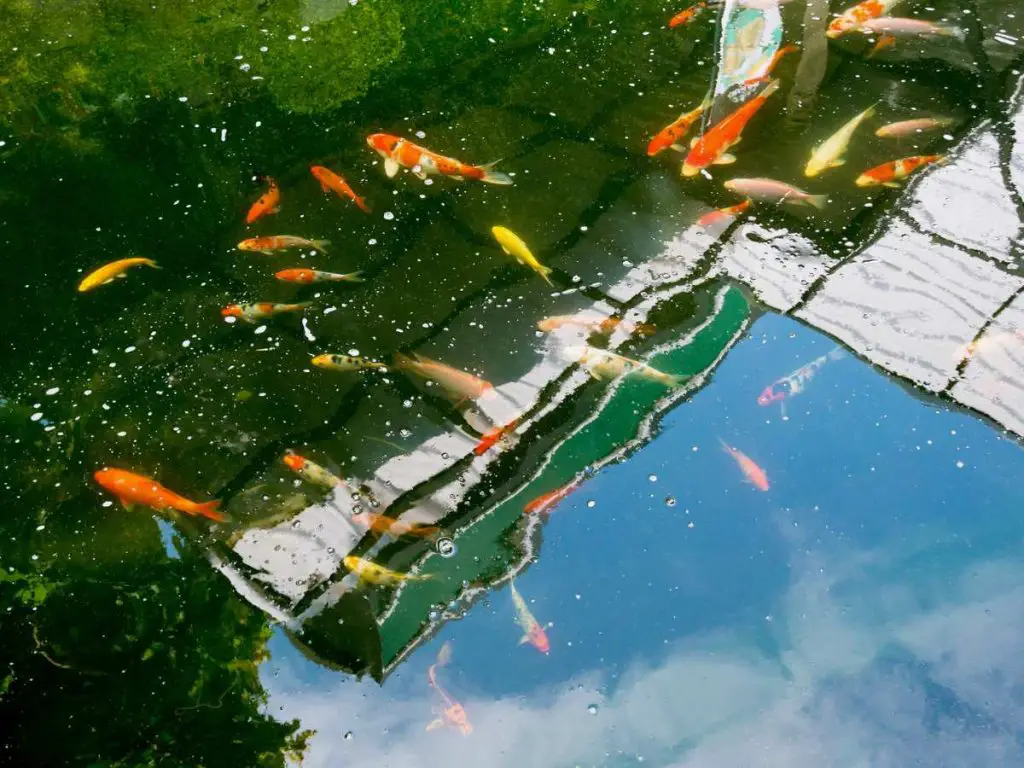
Koi fry, like any other living beings, are susceptible to various diseases and health issues. As a responsible koi owner, it is essential to familiarize yourself with the common ailments that can affect your fry. Some of the most prevalent diseases include fin rot, bacterial infections, and parasites.
Identifying Signs of Illness and Disease
In order to promptly address any health issues that may arise, it’s crucial to be able to identify the signs of illness in your koi fry. Look out for symptoms such as loss of appetite, lethargy, discoloration, frayed fins, and unusual behavior. And keep a close eye on any changes in their appearance or behavior to catch potential problems early on.
Preventive Measures to Keep Koi Fry Healthy
Prevention is key when it comes to ensuring the health of your koi fry. Start by maintaining excellent water quality in their tank, as poor water conditions can stress the fry and make them more susceptible to diseases. Regularly test and monitor water parameters such as pH levels, ammonia levels, and nitrite levels.
Another vital preventive measure is quarantining any new fish before introducing them to your fry tank. This helps prevent the spread of diseases from potentially infected fish to your healthy fry. Implementing a quarantine period will give you time to observe the newcomer for any signs of illness before adding them to the main tank.
Effective Treatments for Common Diseases
If you notice any signs of illness in your koi fry, swift action is necessary to prevent further spread and complications. Depending on the specific disease, there are various treatment options available. Common treatments include salt baths, medicated food, and water treatments. It is important to thoroughly research the appropriate treatment method for the specific illness and follow the instructions carefully to ensure the best possible outcome.
Remember, early detection and immediate treatment are crucial to successfully combating diseases and maintaining the overall health of your koi fry.
Involving a Vet in Koi Breeding and Rearing
When breeding and raising koi, the health and well-being of the fish should always be a top priority. While many koi enthusiasts can manage regular care, there are instances where the expertise of a veterinarian is crucial:
- Unexplained Mortality: If you notice a sudden increase in the death rate among your koi, especially the fry, it’s essential to consult a vet. They can help identify potential diseases or water quality issues.
- Visible Signs of Disease: Symptoms like erratic swimming, ulcers, discoloration, or unusual growths on the fish can indicate health problems. A vet can diagnose the issue and recommend treatment.
- Breeding Complications: If female koi show signs of distress during spawning or if there are issues with egg fertilization, a vet can provide insights and potential solutions.
- Poor Growth Rates: If koi fry aren’t growing at the expected rate or appear stunted, it could be due to nutritional deficiencies, parasites, or other health issues. A vet can advise on proper nutrition and treatments.
- Water Quality Concerns: While many water quality issues can be addressed with testing kits and regular maintenance, persistent problems or unexplained changes in fish behavior might warrant a vet’s expertise.
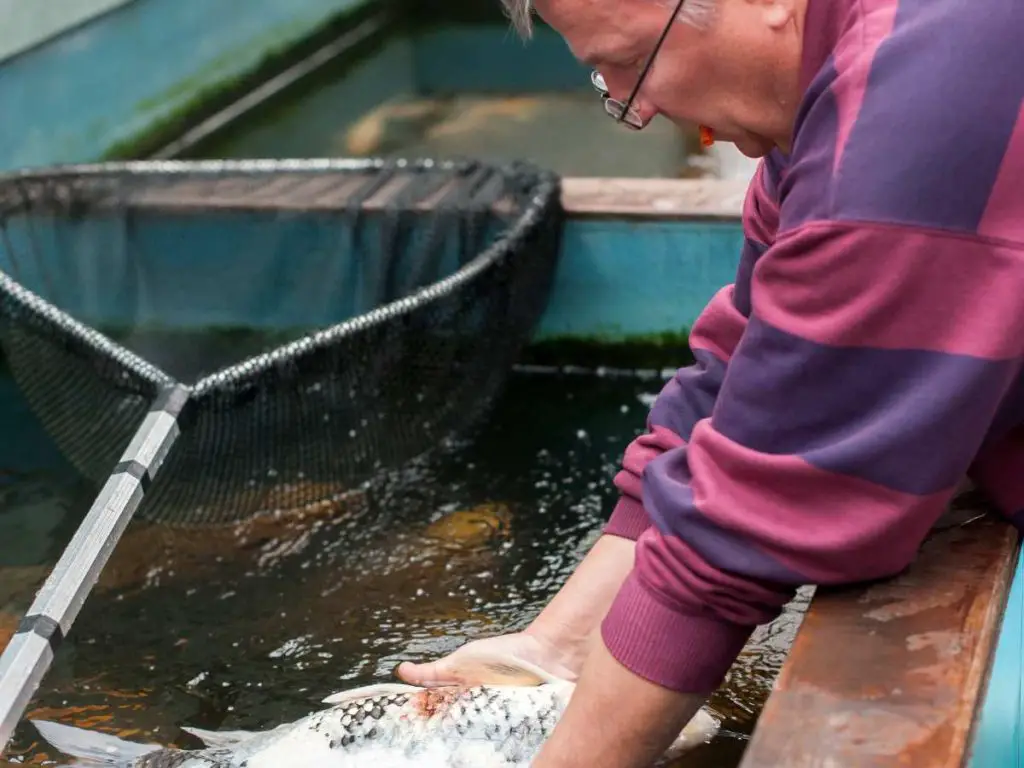
Always remember, early intervention can prevent minor issues from becoming major problems. Regular health checks and monitoring can help ensure the success of your koi breeding and rearing endeavors.
Breeding Koi Fry
When breeding koi fry, selecting the right parent koi is crucial. Look for high-quality and healthy adult koi that exhibit desirable traits such as vibrant colors, good body shape, and overall strong genetic makeup. Keep in mind that the offspring will inherit traits from both parents, so choose wisely, especially if you are buying your koi online.
Consider factors like size, color variations, and pattern combinations when selecting your parent koi. You want to aim for a diverse gene pool to increase the chances of producing vibrant and unique offspring.
Good to know: breeding koi requires a lot of space, as a single spawning can produce thousands of eggs.
Spawning Techniques and Methods
Before spawning, create an optimal environment for your parent koi. Provide them with a spacious breeding tank that mimics their natural habitat as closely as possible. Place plants or spawning ropes in the tank as a suitable surface for the female koi to lay her eggs.
Monitor the temperature and water quality of the breeding tank to ensure it meets the requirements for successful spawning. To stimulate breeding behavior, gradually increase the water temperature to approximately 68-74 degrees Fahrenheit.
Observe your parent koi closely for signs of courtship and spawning behavior. When female koi are ready to spawn, they will exhibit intense chasing by male koi and vigorously rub against the plants or spawning ropes, potentially releasing eggs in the process.
Collecting and Incubating Koi Fry Eggs
Once you notice eggs in your breeding tank, use a finely meshed net or bowl to carefully collect them. Place them gently in a separate incubation tank. Ensure that the incubation tank has stable water conditions and sufficient oxygen supply.
Keep an eye on the eggs as they develop. Within a few days, you should see tiny fry emerging from their shells. It’s essential to maintain the optimum water temperature and quality during this incubation period to support the healthy growth of the koi fry.
Selective Breeding
Selective breeding is a practice used by koi enthusiasts and breeders to produce koi with specific desired patterns, colors, or traits (like goromo, doitsu, or ghost koi, for example). This process involves choosing specific parent koi with the desired characteristics and breeding them.
Post-spawning, as the fry develop, breeders will “cull” or select the fry that exhibit the desired traits and remove those that don’t meet the criteria. This selective process is repeated multiple times as the koi grow, ensuring that only the best specimens are retained. It’s a meticulous and time-consuming process but is essential for producing high-quality koi with specific patterns or colors.
Caring for Newborn Koi Fry
As the koi fry hatch, they will initially rely on their yolk sacs for nutrition. Once they have consumed their yolk sacs, start feeding them nutrient-rich liquid food or newly hatched brine shrimp. Gradually transition them to finely crushed commercial fry food as they grow.
Ensure that your newborn koi fry have enough hiding spots within their tank to protect them from predators. Adding small-sized plants or floating cover will provide them with a sense of security. Koi fry are very vulnerable to predators, including larger koi, so you may need to separate them until they reach a safer size.
Monitor the water temperature and quality regularly and make any necessary adjustments to keep your koi fry healthy and thriving. Pay attention to signs of stress or disease and take immediate action to address them if needed.
Common Mistakes When Raising Fry
Raising koi fry (or even farming koi fish) is a delicate process, and beginners often encounter challenges. Here are some common mistakes to avoid:
- Overstocking: Rearing too many fry in a limited space can lead to poor water quality and even cannibalism. It’s essential to keep a manageable number of fry relative to the available space.
- Inadequate Filtration: Fry tanks require effective filtration to remove waste and maintain water quality. Regular cleaning and maintenance of filters are crucial.
- Improper Feeding: Koi fry have specific dietary needs. Feeding them inappropriate food or overfeeding can lead to health issues and water pollution.
- Neglecting Water Quality: Regularly monitor and adjust the water parameters, including pH, ammonia levels, and hardness, to ensure a conducive environment for the fry.
- Skipping Regular Health Checks: Regularly inspect the fry for signs of disease or parasites. Early detection and treatment are key to preventing widespread issues.
Conclusion
By following the expert tips, step-by-step instructions, and valuable insights discussed in this comprehensive guide, you can ensure the healthy growth and development of your koi fry.
Proper care and handling during the early stages, including setting up a suitable koi fry tank with the right size, water quality parameters, filtration systems, and hiding spots, will create an optimal environment for your koi fry to thrive.
Feeding your koi fry with an appropriate diet at different stages and monitoring their feeding amounts based on their growth rate will support their nutritional needs and promote proper development. Gradually acclimating your koi fry to different temperatures and maintaining ideal water conditions, such as dissolved oxygen levels, will prevent stress and ensure their well-being.
Understanding common diseases in koi fry, identifying signs of illness, and implementing preventive measures will help you keep your koi fry healthy. And if any health issues arise, you can refer to effective treatments for common diseases.
I hope these insights will empower you to take your passion for ponds to the next level. With this comprehensive guide in hand, you have all the knowledge you need to successfully raise koi fry. Start implementing these tips and techniques today, and enjoy the rewarding experience of observing the beautiful transformation of your koi fry into magnificent adult koi.
Related Questions
Can koi fry be kept with adult koi in the same tank?
It is generally not recommended to keep koi fry with adult koi in the same tank. Adult koi may accidentally injure or eat the small fry, which can hinder their growth and survival. It is best to provide a separate tank or nursery pond specifically designed for raising and nurturing koi fry.
Can koi fry survive the winter?
Koi fry can survive the winter if they are well-developed and the pond has adequate depth to prevent freezing solid. However, young fry are more vulnerable to cold temperatures than mature koi. It’s essential to ensure the pond has stable water conditions and to monitor the fry’s health as winter approaches.

